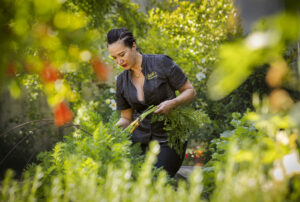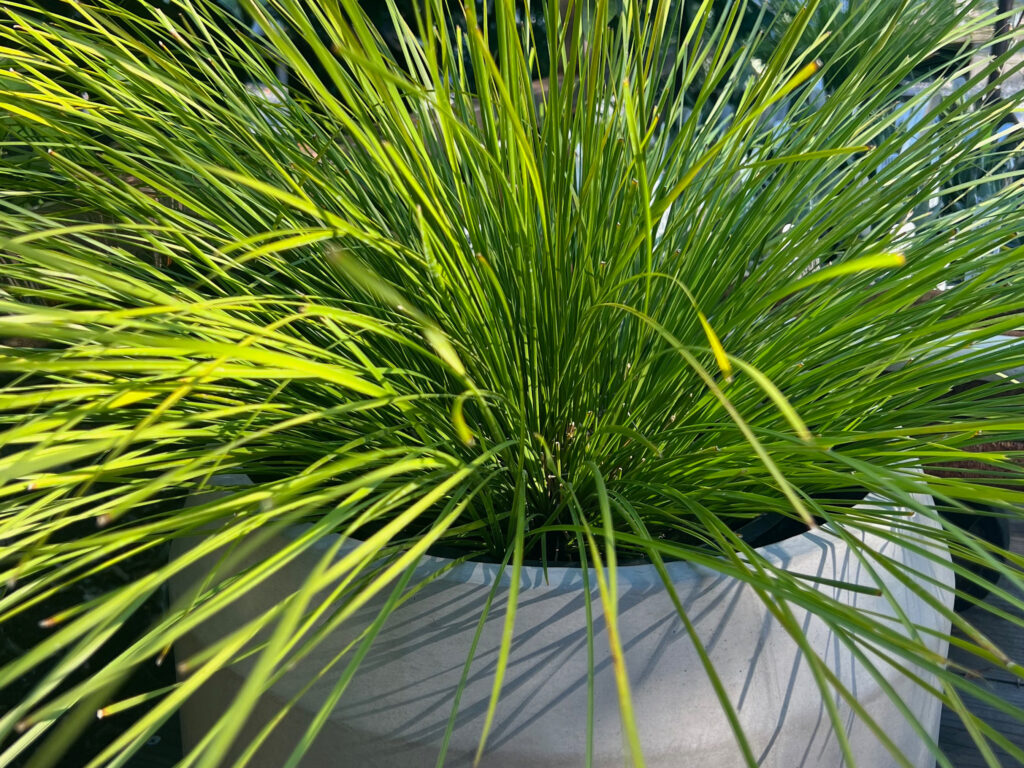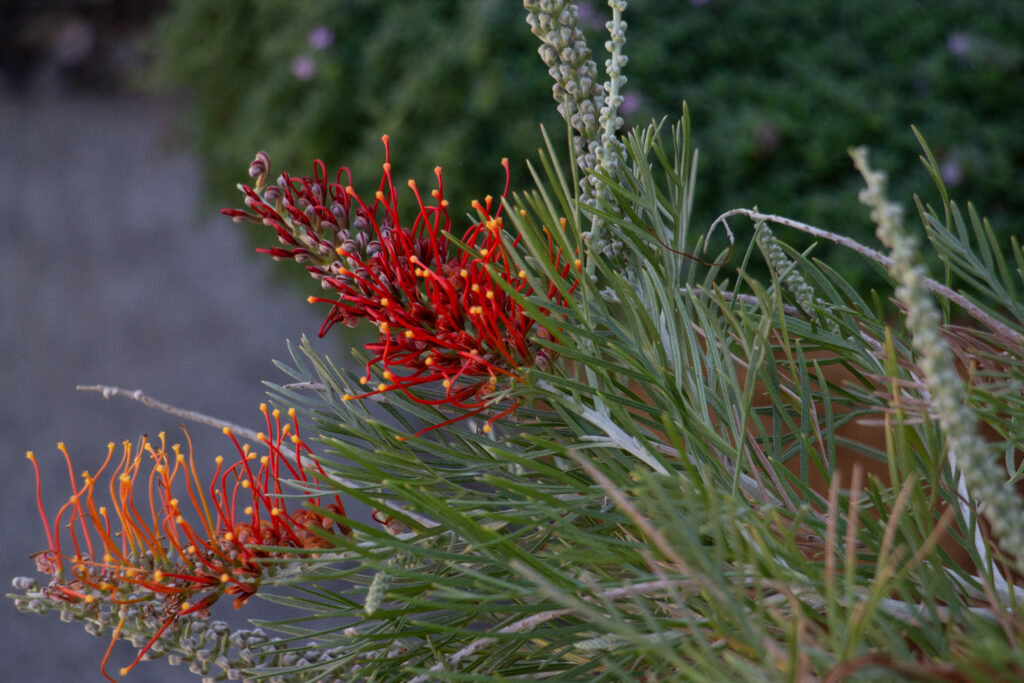As California continues to experience historic drought conditions, now is a good time to rethink the lush cottage garden aesthetic, if you haven’t already. Thankfully, there are plenty of lower-water options if we look to the gardening practices of other regions. Here are a few ideas from local nurseries.
Choose plants wisely
“We have to really think about the next 10 years, not the next couple of months,” says Ashley Porter of Cloverdale Nursery about the choices we make for our gardens. She suggests picking plants from countries with hot and dry climates, such as Australia, Chile, Mexico and South Africa, and recommends varieties like the “Safari Sunset” Leucadendron, a colorful, drought-hardy shrub from South Africa, and the bowing, spiky-leafed Lomandra Breeze, which is native to Australia.
Mick Kopetsky of Mix Garden in Healdsburg recommends plant varieties that can endure both arid summers and wet winters. “The climate is changing, but it’s not changing consistently,” he says. Some of his favorite plants include the Grevillia, Brugmalia and Bulbine–Bulbine, which has spears with yellow and orange flowers that bloom from March to November. Herbs also are great year-round plants, he says, especially not-too-thirsty sage and rosemary.
Fight evaporation
Carefully selecting drought-tolerant plants for your garden isn’t the only way you can conserve water. Kevin Lenhart, lead designer of online landscape design service Yardzen, recommends planting trees. “The shade cast by tree canopies keeps plants and soil cool, minimizing the loss of moisture to evaporation. Tree roots also break up the soil, improving its ability to absorb water back into the ground.”
Another way to create shade is to plant gardens more densely, says Ashley Porter of Cloverdale Nursery. Instead of planting in rows, she recommends planting in groups to create “microclimates (where) the shade of larger plants protect (smaller) sun-sensitive ones.” Porter also recommends catching water on rainy days.
Mulch, mulch, mulch
Mulching is another way to keep moisture in the ground (but remember that some mulches can be fuel for wildfires). Lenhart calls ground cover a “living mulch,” which also can help suppress weeds and erosion.
“There’s a bit of a doom-and-gloom mentality with the weather and water situation,” says Porter. But she believes there are ways adapt to this change that will reconnect people with nature and other regions of the world. “Now is the time to observe, learn and pivot,” she adds.
Click through the above gallery for more inspiration.

















